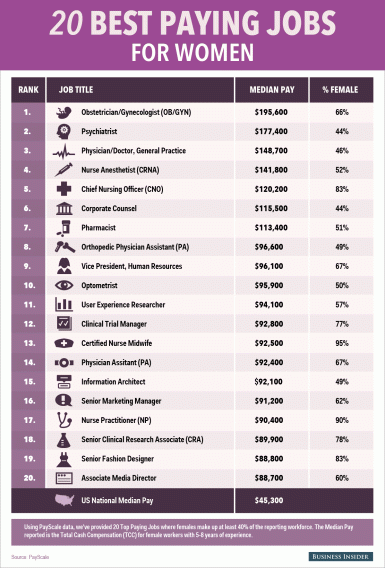In India, the GMAT exam is accepted for admissions at more than 200 programs offered at over 100 business schools.
- Acharya Group of Institutes
- Acharya Institute of Management and Sciences, AIMS School of Business
- Adani Institute of Infrastructure Management
- Administrative Staff College of India
- Aegis School of Business and Telecommunication
- Alliance University, Alliance School of Business
- Amity Business School
- Amrita Vishwa Vidyapeetham University, Amrita School of Business
- Apeejay Education Society
- Apeejay Stya University, School of Management Sciences
- Asia Graduate School of Business
- Asia Pacific Institute of Management
- Asian School of Business Management (ASBM)
- B.S. Abdur Rahman Institute of Science and Technology, Crescent School of Business
- Bangalore Institute of International Management, B I I M
- Bangalore Institute of Management Studies (BIMS)
- Bennett University, School of Management
- Birla Institute of Management Technology
- BITS Pilani
- BML Munjal University, School of Management
- Centre for Management
- Development Management Institute
- Disha Education Society, Disha Institute of Management and Technology
- Disha Education Society, Disha School of Management
- Entrepreneurship Development Institute of India
- Europe Asia Business School
- Foundation for Liberal and Management Education, FLAME School of Business
- Foundation for Organisational Research and Education (FORE)
- Galgotias Business School
- Ganpat University, S. K. Patel College of Pharmaceutical Education & Research
- GITAM University, GITAM School of International Business
- Goa Institute of Management
- Great Lakes Institute of Management
- Grow Talent Company Limited, School of Inspired Leadership
- ICFAI Business School, Hyderabad
- ICFAI Business School, Mumbai
- IFIM Business School
- IIKM Business School
- IILM Graduate School of Management
- IILM Institute for Higher Education
- IIMT School of Management, Business School
- Indian Institute of Foreign Trade
- Indian Institute of Management Ahmedabad
- Indian Institute of Management Bangalore
- Indian Institute of Management Calcutta
- Indian Institute of Management Indore
- Indian Institute of Management Kozhikode
- Indian Institute of Management Lucknow
- Indian Institute of Management Raipur
- Indian Institute of Management Ranchi, IIM Ranchi
- Indian Institute of Management Rohtak
- Indian Institute of Management Shillong
- Indian Institute of Management Tiruchirappalli
- Indian Institute of Management Udaipur, Business School
- Indian Institute of Social Welfare and Business Management
- Indian Institute of Technology Gandhinagar
- Indian Institute of Technology, Madras
- Indian Institute of Tourism & Travel Management
- Indian School of Business
- Indian School of Business and Finance
- Indus Business Academy, IBA, Bangalore
- Institute for Financial Management and Research, IFMR
- Institute for Technology and Management, ITM Business School
- Institute for Technology and Management, ITM Global Leadership Center
- Institute of Management Development and Research
- Institute of Management Technology, Ghaziabad
- Institute of Management Technology, Hyderabad
- Institute of Management Technology, Nagpur
- International Management Institute Kolkata
- International Management Institute of India, Bhubaneswar
- International Management Institute of India, New Delhi
- International School of Management Excellence
- ISBR Business School
- JK Lakshmipat University, Institute of Management
- JRE Group of Institutions, JRE School of Management
- K. J. Somaiya Institute of Management Studies & Research
- Kalinga Institute of Industrial Technology, School of Management
- Kirloskar Institute of Advanced Management Studies
- Lovely Professional University, Department of Management
- Maharashtra Institute of Technology (MIT), School of Telecom Management
- Malaviya National Institute of Technology Jaipur
- Management Development Institute
- Manipal University Jaipur, TAPMI School of Business
- MCI Management Center Innsbruck
- MISB Bocconi
- Mudra Institute of Communications, Ahmedabad
- Mysore Royal Academy, MYRA School of Business
- National Institute of Fashion Technology
- National Institute of Industrial Engineering (NITIE)
- National Institute of Securities Markets, School for Securities Education
- National Institute of Technology Karnataka, DASA
- National Institute of Technology Srinagar, DASA
- National Management School, National Schools of Business and Management Private Limited
- NIIT University
- NMIMS University, School of Business Management
- NorthCap University, Center for Leadership
- O.P. Jindal Global University, Jindal Global Business School
- Pandit Deendayal Petroleum University (PDPU), School of Petroleum Management (SPM)
- Praxis Business School
- Prin. L.N. Welingkar Institute of Management Development and Research
- PSG College of Technology, PSG Institute of Management
- Pune Institute of Business Management
- Punjab Technical University, Aryans Business School
- Punjab Technical University, Aryans School of Management
- Rajalakshmi School of Business
- RIMT University, School of Management Studies
- S. P. Jain Institute of Management and Research
- Sadhana Centre for Management & Leadership Development, SCMLD
- SDM Institute for Management Development
- SelaQui Academy of Higher Education
- Seshadripuram Institute of Management Studies
- Sharda University, School of Business Studies
- Shiv Nadar University
- Shoolini University, Faculty of Management Sciences & Liberal Arts
- Shri Ram Murti Smarak College of Engineering & Technology, Faculty of Management Science
- Sir Padampat Singhania University, School of Management
- Siva Sivani Institute of Management
- Spicer Memorial College
- SRM University, Faculty of Management
- St. Mary’s Educational Society, South State Business School
- Sunstone Business School
- T. A. Pai Management Institute
- TASMAC
- Tata Institute of Social Sciences
- TERI University, TERI School of Advanced Studies
- Universal Business School
- University of Delhi, Faculty of Management Studies
- UPES, College of Management and Economics Studies
- Vanguard Business School
- Veltech Dr RR & Dr SR Technical University, Vel Tech Business School
- VIT University, VIT Business School
- Vivekananda Institute of Management Studies
- Vivekananda Institute of Professional Studies, Delhi School of Business
- Woxsen School of Business
- Xavier Institute of Management, Bhubaneswar
- XLRI Jamshedpur
For the most recent information, please visit the website of the university/institution









